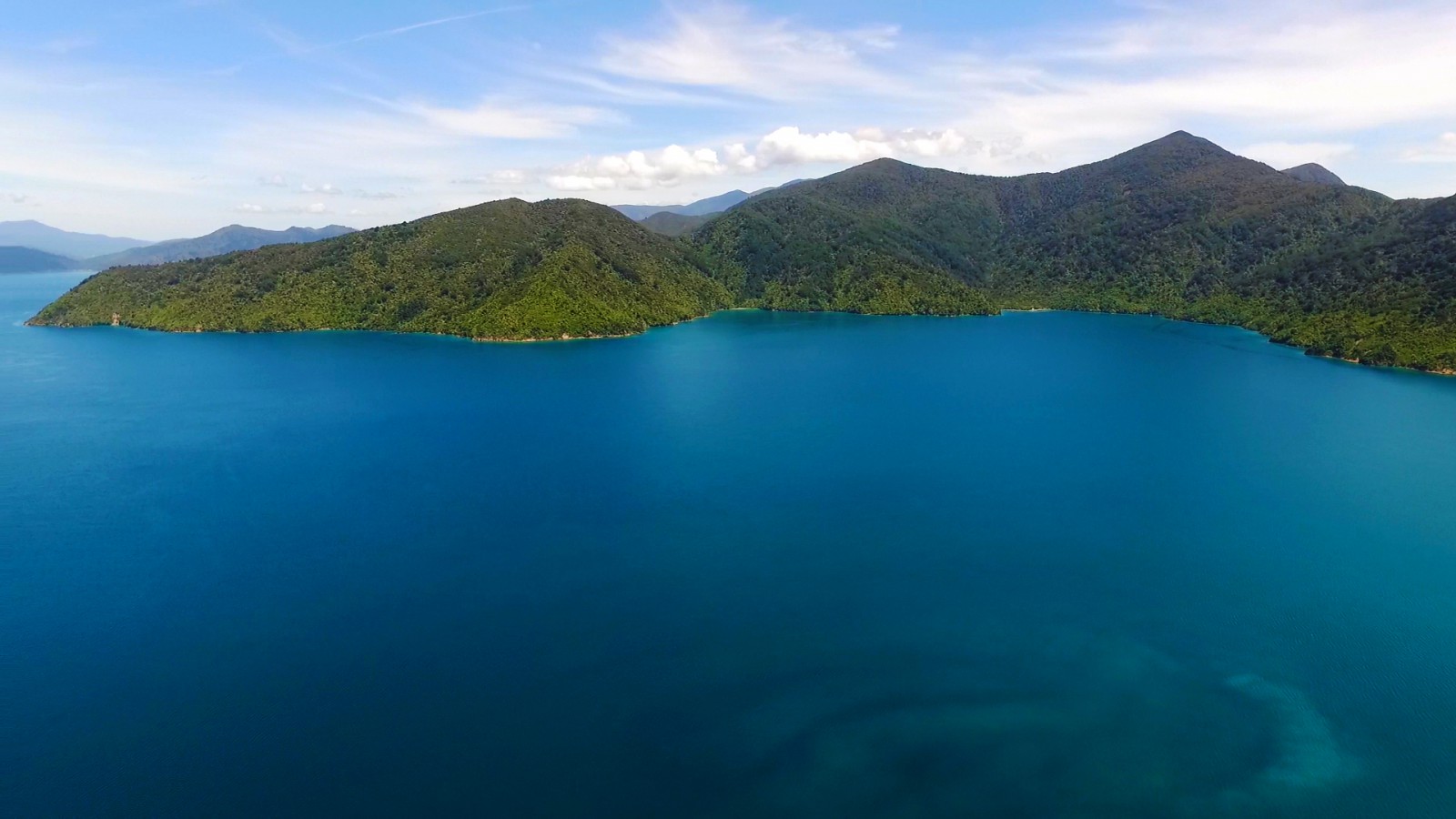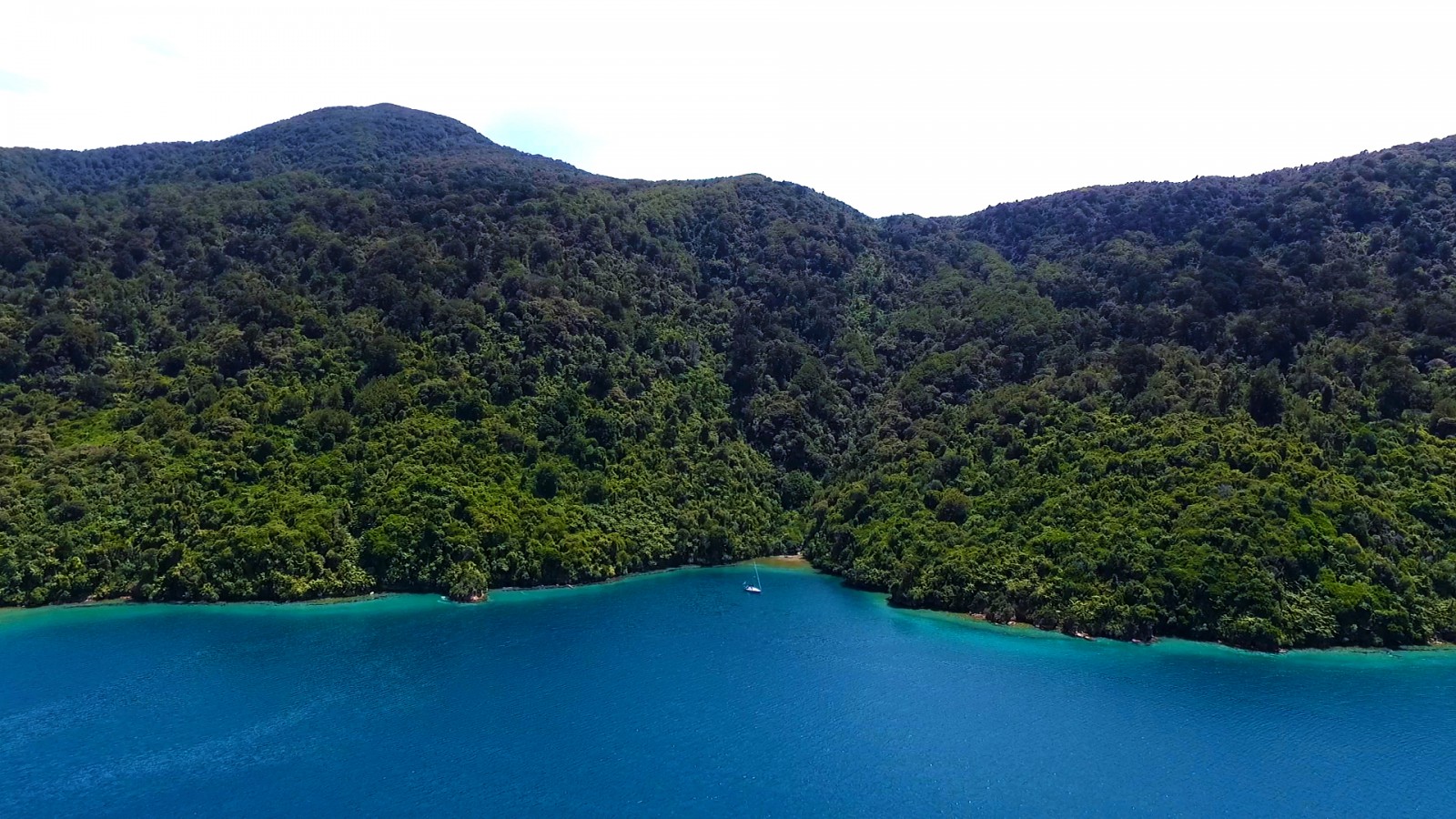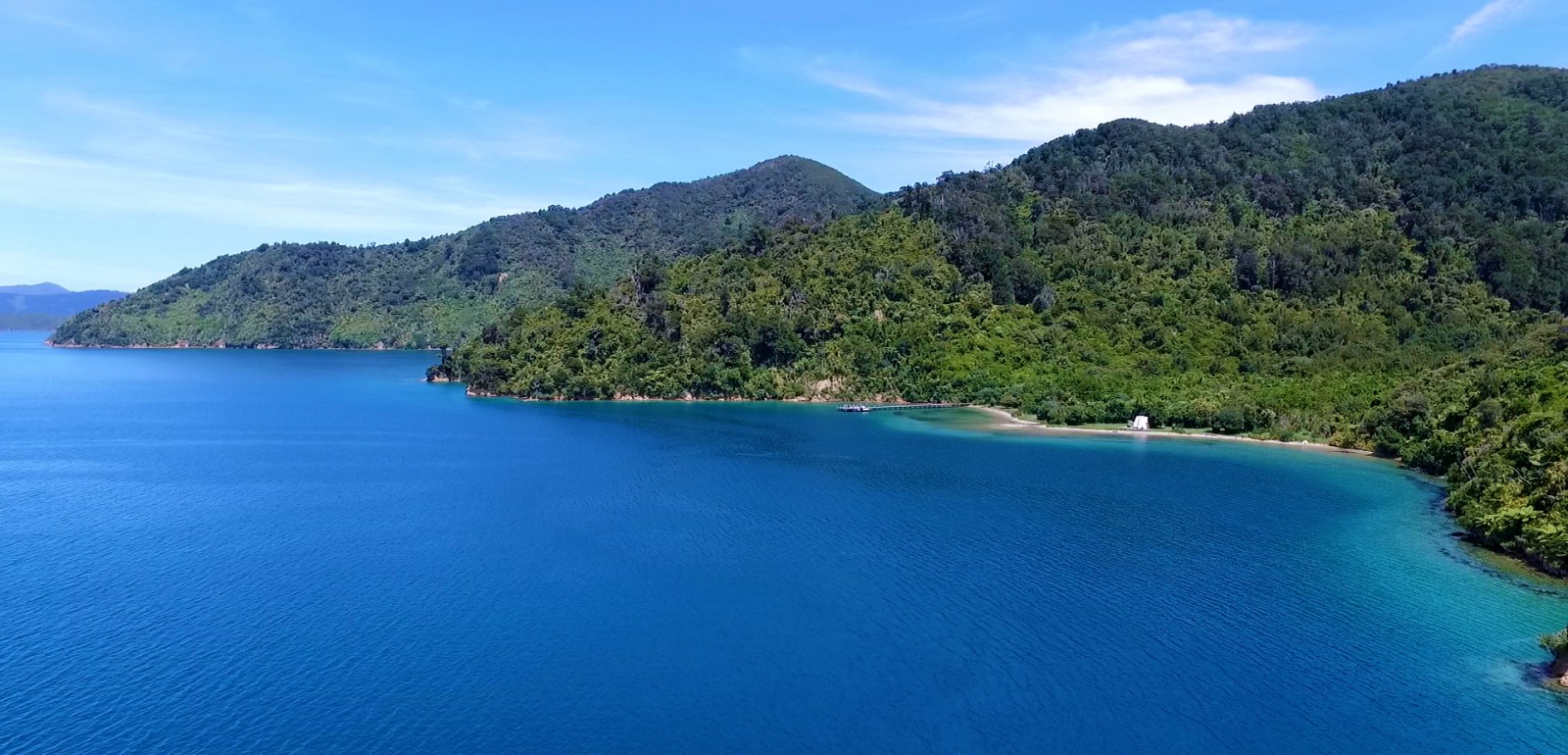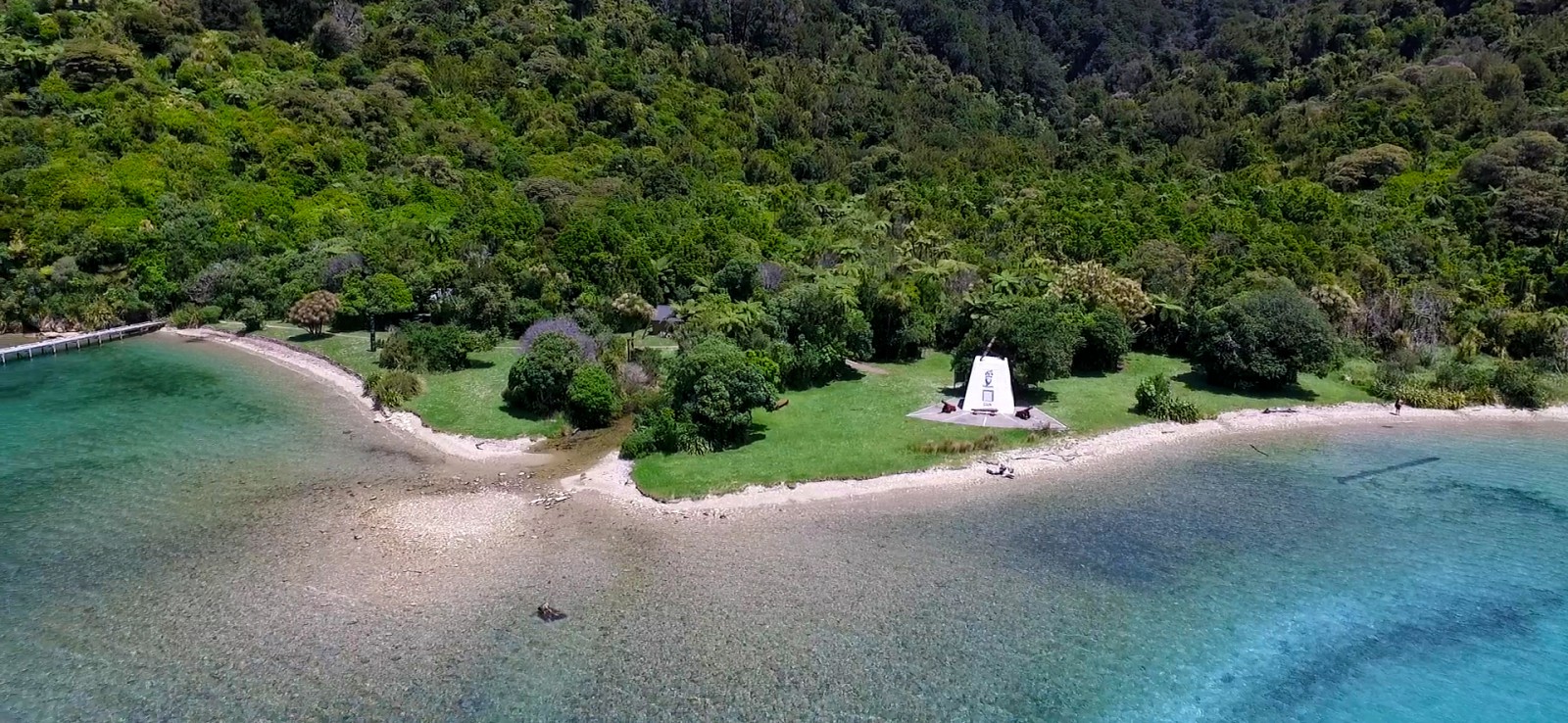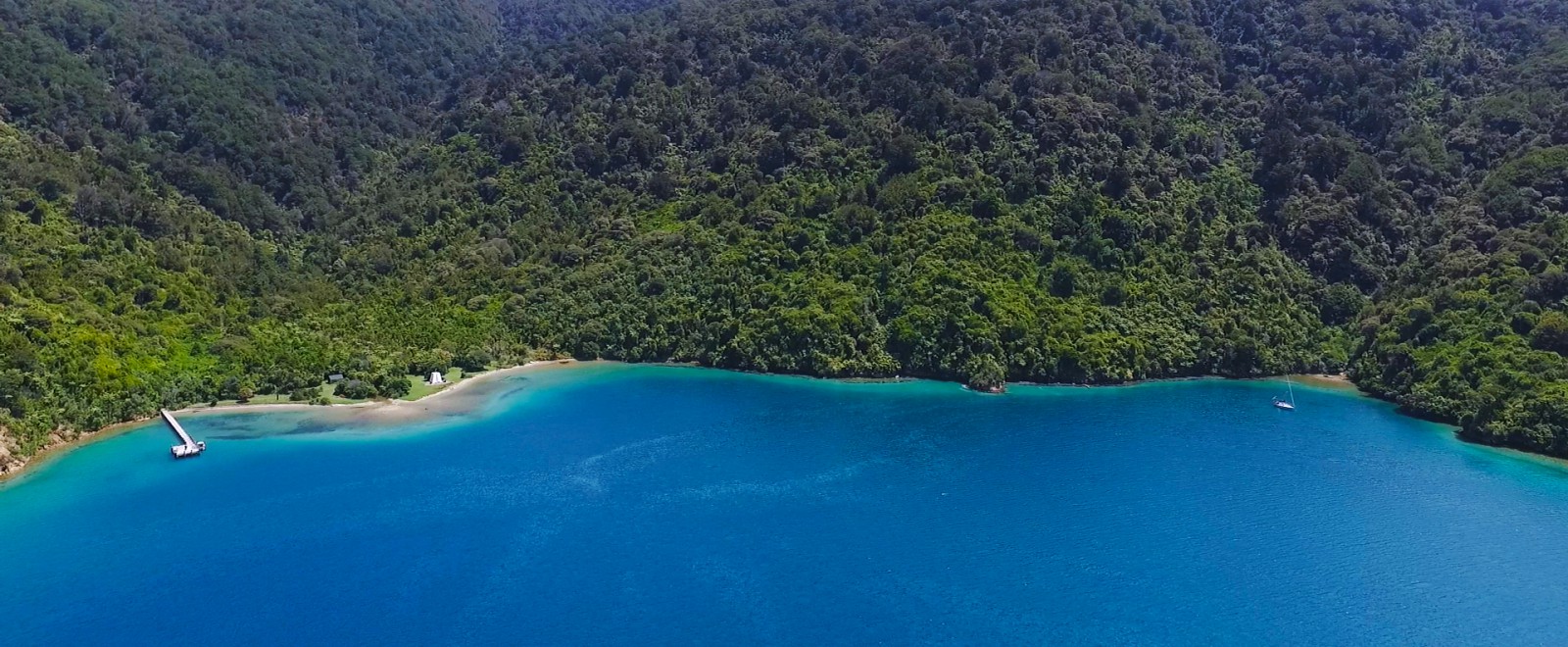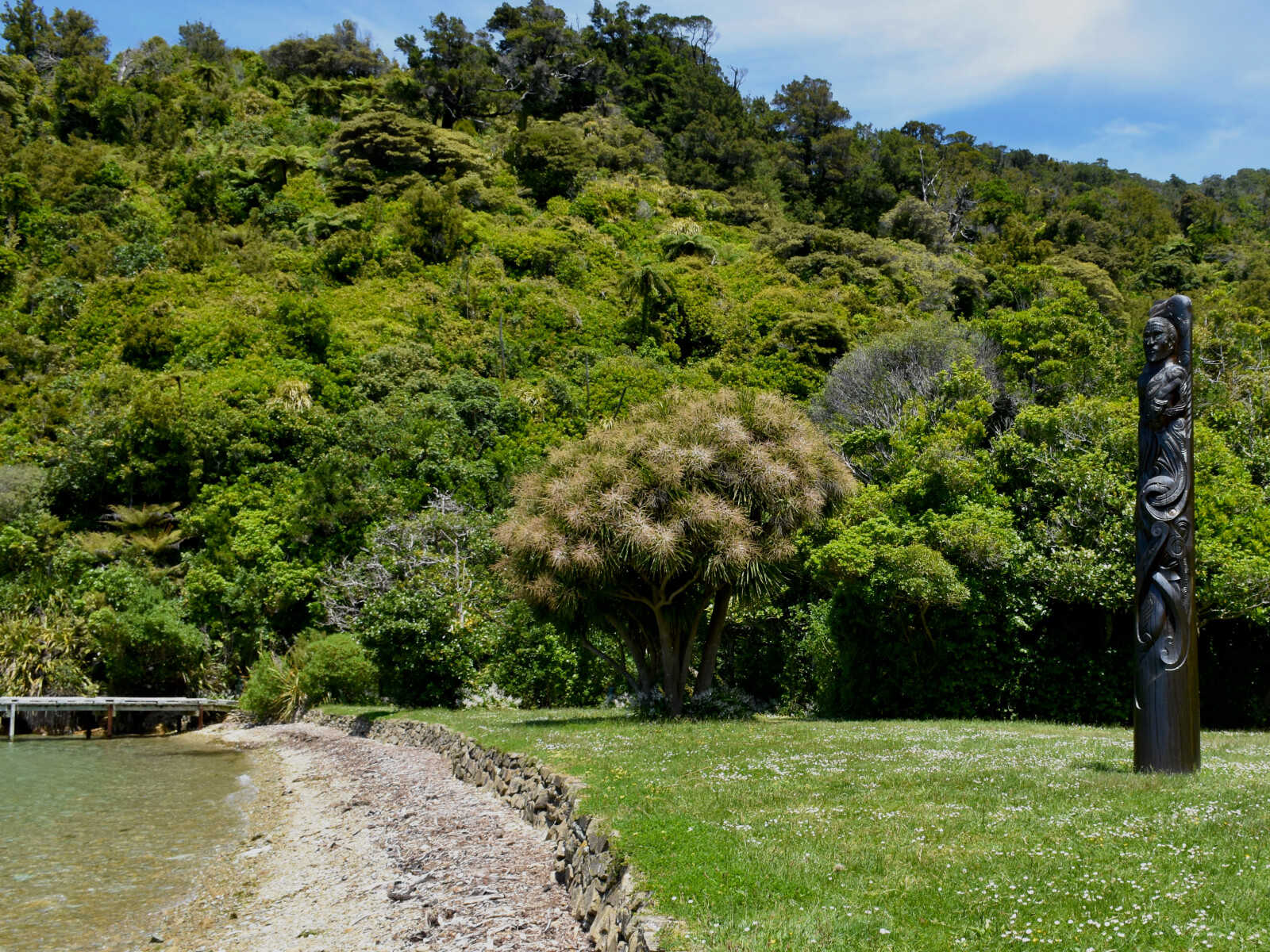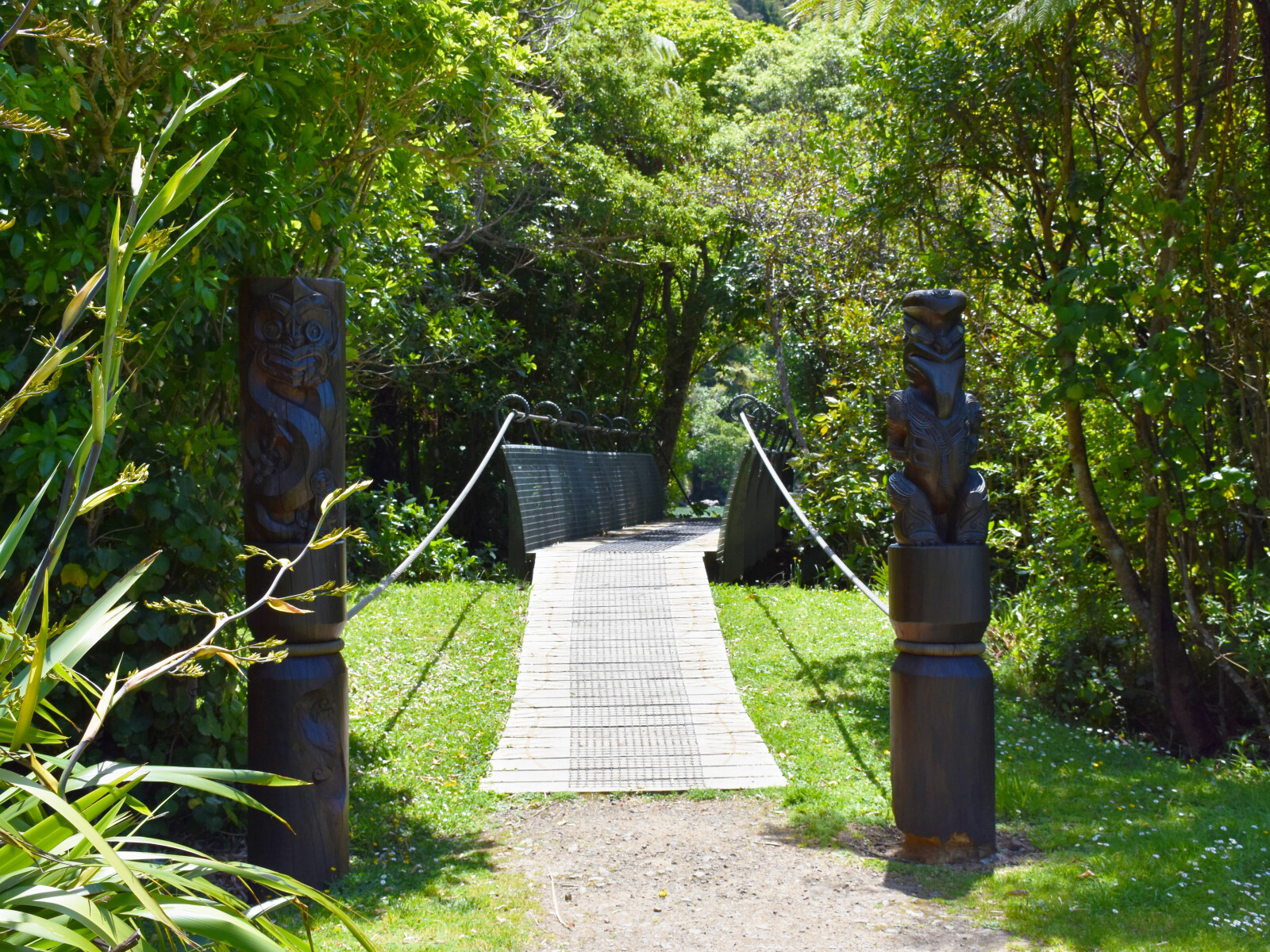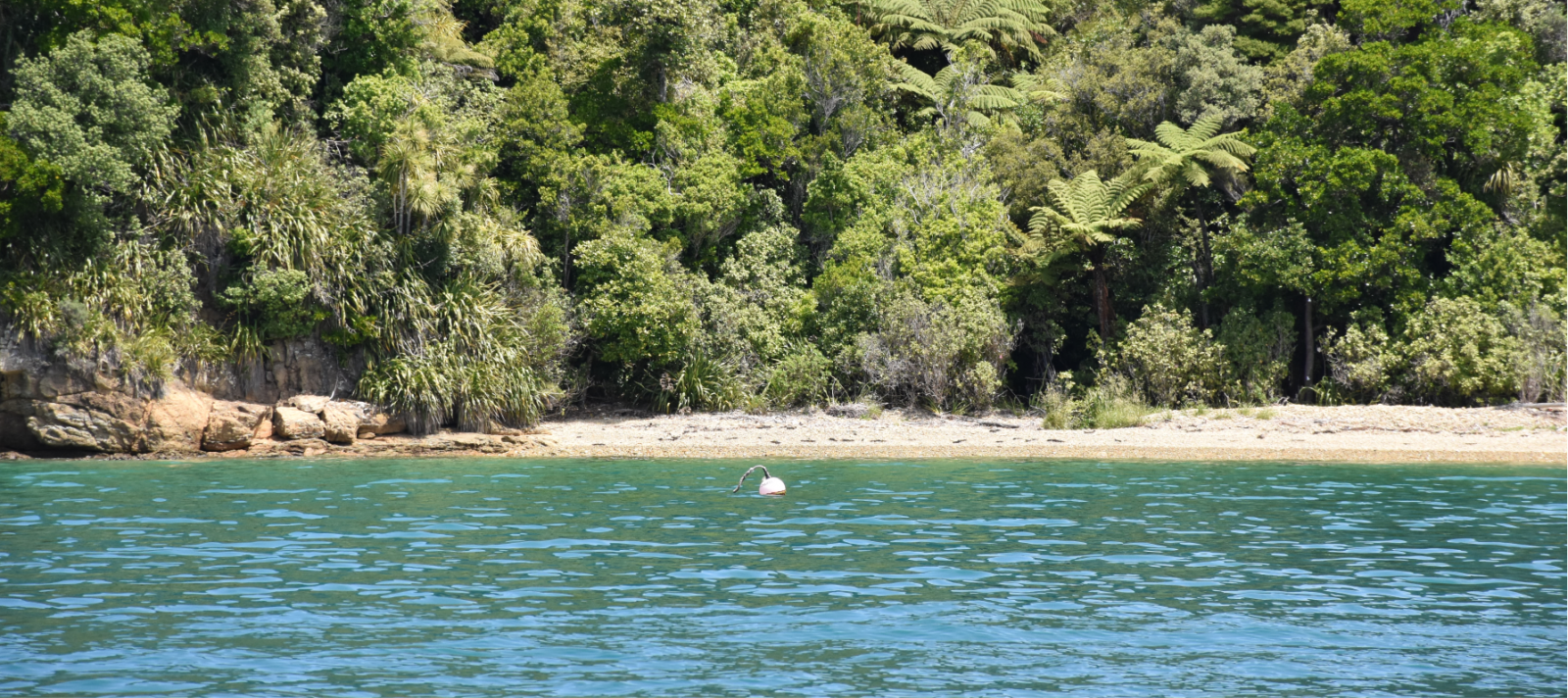Since 2014 the bay has been officially recognised by its dual name, Meretoto/Ship Cove.1
The Māori name for the bay, Meretoto translates as bloody weapon. A mere is a short, flat weapon made of stone and toto means blood.2
The bay was given its European name by Captain James Cook in 1770.3
Meretoto/Ship Cove had been used by Māori from several iwi (tribes) for many generations. The bay was used for the gathering of kaimoana (seafood) and as a site for manufacturing pakohe (argillite) tools. The cove was also used as an urupā (burial site) and an anchorage for waka (canoes).4
Cook was the first European to explore Tōtaranui/Queen Charlotte Sound. He visited Meretoto/Ship Cove five times between 1770 and 1777, spending approximately 100 days in the area. The bay provided safe anchorage, food and fresh water and timber for repairs to his ships. During these visits Cook and his men planted vegetable gardens and released animals, including goats, sheep and pigs.5
Māori were inhabiting the area during Cook’s first visit. European records note that soon after the arrival of the HMS Endeavour, a scouting party in waka encircled the ship. The interaction was a peaceful one with Cook inviting members of the party on board. Thereafter Maori established a temporary kainga or village near Cook’s encampment.6
While the importance of Meretoto/Ship Cove to New Zealand’s history has long been appreciated, up until the late Twentieth Century, wider historical interest focused predominantly on European perspectives and Captain Cook.
For example, a scenic reserve was established in the bay as early as the 1890s and in 1913 a memorial obelisk commemorating Cook’s voyage was unveiled in front of a large crowd.
More recently, however, the dual heritage of the area has been recognised and the traditional stories of Māori are being acknowledged.
In 2006 the Department of Conversation and iwi worked together to redevelop an area of the bay in order to provide a bicultural interpretation of the site. Three pouwhenua (carved wooden posts) were installed on the site, one depicting the Polynesian explorer Kupe and his arrival in the area, and two depicting the iwi with associations to the bay.7
The widely renowned Queen Charlotte walkway also begins at Meretoto/Ship Cove.
Originally a series of separate walkways used by iwi to access adjoining bays and later, by European settlers for moving cattle and for coast watch during the Second World War, the tracks were joined together by local farmers in the 1980s.8
In 1991, under the management of the Department of Conservation, all sections of the track were connected into one walkway.
Today the walkway is managed and maintained by the Department of Conservation with the assistance of 10 private owners, known as the Queen Charlotte Track Inc.9
1. “NZGB decisions - August 2014”, Land Information New Zealand, accessed November 23, 2017, https://web.archive.org/web/20151121203027/http://www.linz.govt.nz/regulatory/place-names/recent-place-name-decisions-and-place-names-interest/nzgb-decisions-august .
2. “New and altered geographic names of Te Tau ihu”, the Prow, accessed November 23, 2017, http://www.theprow.org.nz/maori/geographic-names-tetauihu/#.XVur0egzbIU .
3. Hilary Mitchell and John Mitchell, Te Tau Ihu O Te Waka: a History of Maori of Nelson and Marlborough: Volume 1: Te Tangata me Te Whenua- the People and the Land (Wellington: Huia, 2004) 150-153.
4. Marlborough District Council, Nelson City Council and Tasman District Council, “Te Tau Ihu Statutory Acknowledgements 2014”, accessed July 18, 2018, http://www.nelson.govt.nz/assets/Environment/Downloads/TeTauIhu-StatutoryAcknowledgements.pdf .
5. Mitchell and Mitchell, ‘History of Maori of Nelson and Marlborough’, 150-153.
6. Joy Stephens, “Ship Cove – a haven for Captain Cook”, The Prow, accessed December 6, 2017, http://www.theprow.org.nz/places/ship-cove-and-captain-cook/#.WiewY0qWbIV .
7. Peter N. Meihana and Mark Moses, “It’s a Māui’s World”, Tuia 250, accessed August 20, 2019, https://mch.govt.nz/tuia250 .
8. Marlborough District, Nelson City and Tasman District Councils, “Statutory Acknowledgements 2014”.
9. “Track History”, Queen Charlotte Track Inc., accessed November 23, 2017, http://www.qctrack.co.nz/the-track-surrounds/track-history/ .

